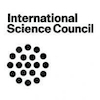A.Molinié ve G.Bodenhausen’in “On toxic effects of scientific journals” adlı makalesi; J.Biosciences, 38, 189 (2013)
The advent of online publishing greatly facilitates the dissemination of scientific results. This revolution might have led to the untimely death of many traditional publishing companies, since today’s scientists are perfectly capable of writing, formatting and uploading files to appropriate websites that can be consulted by colleagues and the general public alike. They also have the intellectual resources to criticize each other and organize an anonymous peer review system. The Open Access approach appears promising in this respect, but we cannot ignore that it is fraught with editorial and economic problems. A few powerful publishing companies not only managed to survive, but also rake up considerable profits. Moreover, they succeeded in becoming influential ‘trendsetters’ since they decide which papers deserve to be published. To make money, one must set novel trends, like Christian Dior or Levi’s in fashion, and open new markets, for example in Asia. In doing so, the publishers tend to supplant both national and transnational funding agencies in defining science policy. In many cases, these agencies tend simply to adopt the commercial criteria defined by the journals, forever eager to improve their impact factors. It is not obvious that the publishers of scientific journals, the editorial boards that they appoint, or the people who sift through the vast numbers of papers submitted to a handful of ‘top’ journals are endowed with sufficient insight to set the trends of future science. It seems even less obvious that funding agencies should blindly follow the fashion trends set by the publishers. The perverse relationships between private publishers and public funding agencies may have a toxic effect on science policy.































